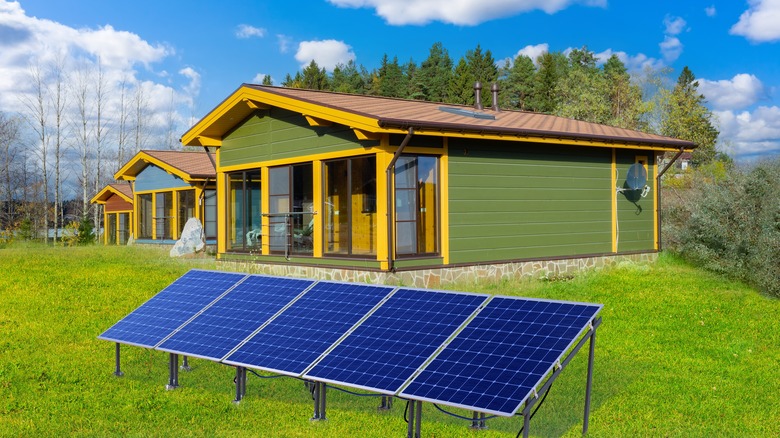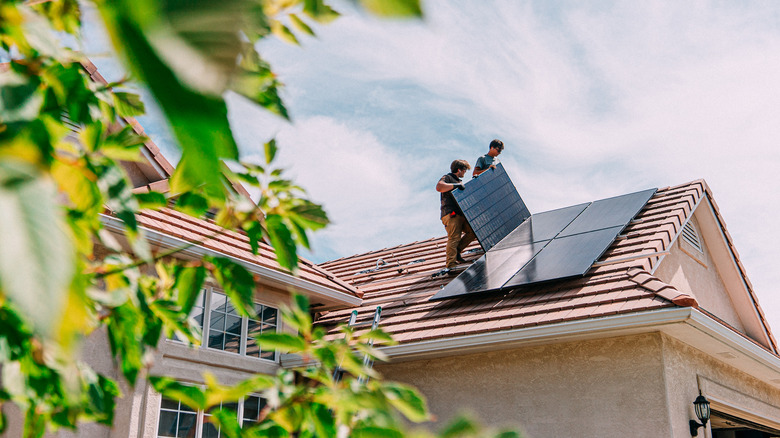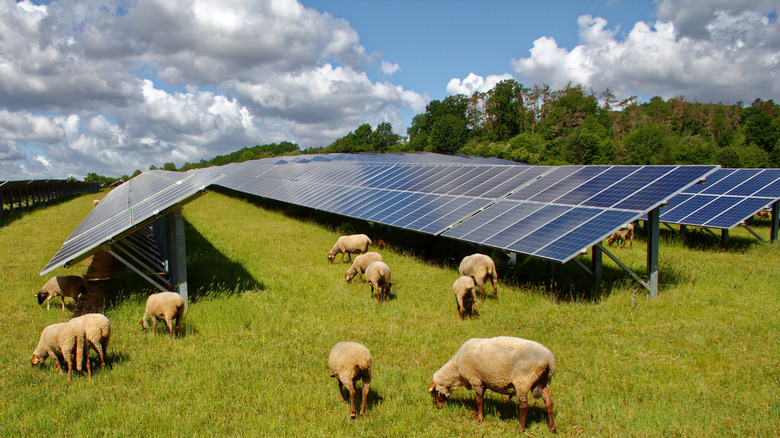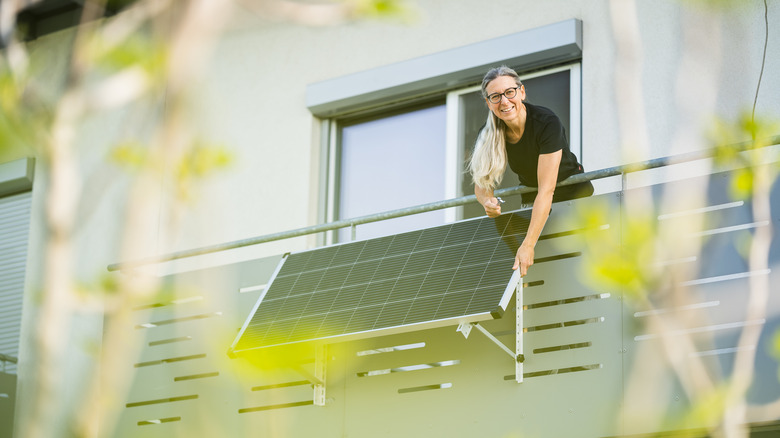Ground-Mounted Vs Roof-Mounted Solar Panels: Which Are Better?
When deciding to put solar panels on your property, there are a few key decisions that have to be made before you get to harnessing the sun's power. First, you have to decide whether to go with monocrystalline solar panels or polycrystalline solar panels, which is essentially deciding between black- and blue-colored panels (but a little more complicated). Next, you have to figure out where to put them. That's where you have two main options: on the roof or on the ground. There's no right or wrong decision here, and you'll be able to enjoy your solar panels' environmental benefits as long as they are pointing up.
As their names clearly indicate, ground-mounted solar panels are typically built into some sort of foundation along the ground, whereas roof mounts are often affixed to a bracket on your roof. Whether you decide on ground-mounted versus roof-mounted solar panels depends on various factors, including cost, maintenance, energy needs, and the layout of your property. Here are some questions to determine which option is best for your particular needs. Hopefully, it will save you plenty of time at the solar panel store when you're trying to decide between them.
How is your property laid out?
The obvious key to efficiency with solar panels is getting as much sunlight as possible. Ground-mounted systems are best for this because they can be installed in any direction and maximize the amount of sunlight gathered. Since roofs tend to be angled and are rarely flat, finding the ideal alignment for maximum sun exposure is more difficult. Instead, you'll probably have to point your solar panels wherever your roof is facing. They'll still absorb plenty of sun, but not as much as those installed on the ground.
One of the other issues with roofs is that they can be much smaller than the yard, and the space up there can be quite limiting in terms of solar panel placement. Ground-mounted solar panels typically have more room to stretch out and create a more efficient array. Adding more is easier as well, since additional solar panels can be bolted to new, adjacent ground mounts. Once the roof is maxed out with solar panels, however, that's typically the end of the line.
This all depends on the size of the property, though. Roof solar panels are an efficient use of space and free up what may be much-needed room in the yard. On the other hand, ground mounts take up plenty of space, and you might not want a yard that's mostly solar panels, especially if there's a dog or little kids running around. Ultimately, ground mounts are probably best suited for those living in the country with larger properties, whereas roof mounts are best for those in the city.
What is your budget?
Of course, when trying to decide which consumer solar panel is right for you, one of the most important things to consider is the cost. The energy efficiency of ground-mounted panels becomes a little less appealing when you consider the upfront spending required.
Roofs are limited when it comes to space, but they do immediately offer a stable surface upon which to place the panels. In the yard, you can't just drop solar panels in the ground like plants. Instead, they require a structure to hold them in place, which means surveying the ground, digging holes, and laying a foundation — all of which adds to the installation costs. Those costs can significantly vary from state to state and can also be influenced by federal tax credits, energy usage, and various other factors.
One estimate by energy analyst company Wood Mackenzie (via CNET) suggests 8 kilowatts (kW) of solar power on a roof costs an average of $2.99 per watt or $23,920 for the whole setup. On the other hand, Energy Sage estimates ground-mounted panels will cost you $3.36 per watt due to added installation costs, or roughly $37,000 after the federal tax credit. However, one thing to consider is that you might get more solar savings with ground-mounted solar panels, which will help you pay off the costs faster.
Access and hard to reach panels
If you decide to go ahead with a solar array, you can't exactly just install it and forget about it. Maintenance is always an issue, especially in the beginning, and just like Christmas lights, solar panels are much easier to deal with if you can easily reach them. It can be dicey having to get up on the roof every time there's an issue with the system. If a part like a microinverter runs into trouble, removing the panels to access the components underneath will be more difficult from atop a slanted roof. The same goes for ongoing cleaning issues, like removing snow, dust, or whatever other debris blew its way onto the delicate solar array.
All of the above is much easier to do when you're standing safely on the ground and merely need to lean over instead of climb a ladder. That tends to enter into our decision-making process in addition to weighing costs, convenience, placement, and long-term savings.
Whether solar panels are placed up on the roof or down on the ground, one configuration isn't inherently better than the other. It all depends on the size and nature of your property, energy efficiency needs, and budget. However, considering these factors will help you avoid a time in which you're staring at a freshly installed solar array, wishing you'd put it somewhere else.



